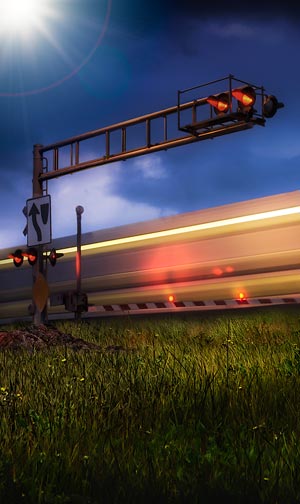(Ellicott City, Maryland – September 7, 2013)
A collision between a CSX coal train and a car carrying two occupants at the non-gated Ellicott City, MD crossing of Old Frederick Road and CSX railroad tracks early Saturday morning about 4:25 A.M. resulted in injuries to both individuals.
If Ellicott City sounds familiar, it was the site of a double fatality almost exactly (August 21, 2012) a year ago, when two 19-year-old women were crushed to death beneath the weight of another CSX coal train which derailed over 20 cars of coal on top of Elizabeth Nass and Rose Mayr, who were visiting Ellicott City’s entertainment district just before their planned return to college (an event which was precluded by the deadly tragedy). The accident was attributed to a broken brake hose between two of the coal cars.
In the crossing accident, the driver, Francisco Reyes Jr., 20, of Baltimore, MD, was transported to Maryland Shock Trauma Center in Baltimore, MD, where he was admitted in serious condition, while the passenger, who was not identified, was treated at the scene by paramedics. The CSX train consisted of three locomotives hauling 130 cars according to CSX Spokesman Bob Sullivan.
The CSX/Old Frederick Road intersection is equipped with standard, mast-mounted flashing signals, but lacks the element most critically needed to provide the best railroad grade crossing protection: crossing gates. The crossing accommodates a dozen CSX trains daily at a top allowable speed of 25 mph. Saturday’s crash marked the fifth accident to occur at the intersection and the second of such to cause injury.
Regardless of the existence of the flashing light signals, the crossing is heavily enshrouded with trees and brush, virtually forming a tunnel of vegetation as a motorist approaches it. So heavy is the forestation that even the flashing signals are partially obscured from a clear view for the approaching motorist.
As previously mentioned, this crossing did not have any gates. It is virtually certain that lights and gates would have prevented this incident. Both CSX and Operation Lifesaver know lights and gates are the most effective type of protection at railroad crossings. Studies that have been conducted over fifty years ago confirm that lights and gates offer the ability to drastically reduce the number of vehicle/train accidents by as much as 96%.


